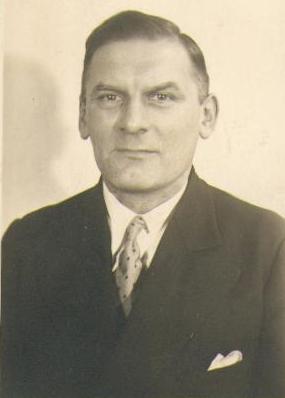Search for Names, Places and Biographies
Already layed Stumbling Stones
Suche
Stolpertonstein
Sprecher: Alexander von Beyme
Biografie: Hildegard Thevs & Sabine Winter
Josef Rudolf Schup * 1893
Freihafenstraße 21 (Hamburg-Mitte, Rothenburgsort)
Verhaftet 1936
Zuchthaus Bremen
1940 KZ Sachsenhausen
ermordet 11.10.1944
Josef Schup, born on 11 Mar. 1893 in Lodz, executed on 11 Oct. 1944 in the Sachsenhausen concentration
Freihafenstrasse 21
Apart from the Stolperstein on Freihafenstrasse in Rothenburgsort, a memorial stone in the Sachsenhausen concentration camp commemorates Josef Schup: In the camp’s Industriehof (industry yard), 27 German and French prisoners were murdered on 11 Oct. 1944. They are commemorated in an annual ceremony held there. Belonging to the Communist camp resistance, their group was exposed by the SS in the summer of 1944 and secretly executed.
Josef Schup was born in Lodz, a city belonging to Russia at the time and characterized by the textiles industry. He was born into a Protestant family. His father Rudolf was a tailor; no further details are known about his mother Johanna Schup, née Luther.
After attending school for four years, Josef Schup started his occupational life as a factory worker. In 1913, he moved to Saxony, went on to Britain, and took up residence in Hamburg following the First World War. He lost his Polish citizenship when refusing to perform his military service and remained stateless. Due to his statelessness, he was unable to marry his fiancé, with whom he resided at Freihafenstrasse 21. In 1924, daughter Lisa was born.
In the 1920s, Josef Schup, working as a longshoreman, joined the Communist Party and the Communist Alliance of Red Front Fighters (Roter Frontkämpferbund – RFB), continuing to head its Rothenburgsort local branch for some time even after the transfer of power to Hitler.
Due to illegal residence in Germany and several instances of crossing the border illegally, he was arrested several times, and in 1935 he was to leave the country for good. Before that happened, he was arrested on charges of "participating in conspiracy to murder” on 2 Sept. 1935. In a mass trial against the RFB because of the "conspiracy to murder” and a follow-up trial on charges of "preparation to high treason” ("Vorbereitung zum Hochverrat”), the Hanseatic Higher Regional Court (Hanseatisches Oberlandesgericht) sentenced him to a five-year term in a penitentiary, which he began to serve on 2 Oct. 1936 in Hamburg-Fuhlsbüttel, continuing his prison term on 19 October in Bremen-Oslebshausen. Calculating the period pretrial detention against his overall sentence, the court set the end of the prison term for 2 Sept. 1940. Several pleas for clemency were turned down on the grounds that he was an "incorrigible Communist.” He did not see his family again, though he maintained contact by letter.
Although released from detention in the penitentiary, he was handed over to the Hamburg Gestapo. On 28 Sept. 1940, the Secret State Police transferred him to the Sachsenhausen concentration camp, where we received prisoner number 033186. As the block elder (Blockältester) in Block 68 and as a foreman of a construction detachment, Josef Schup took care of younger prisoners in particular. As part of the camp resistance, he organized ceremonies and cultural events, helping Soviet prisoners if possible. The SS used any means to take action against the "secret society activities and sabotage” of the Communist camp resistance.
In the summer of 1944, Heinrich Himmler initiated internal SS investigations in Sachsenhausen due to theft of valuables. He instituted a special commission of the Gestapo, which as a result interned more than 100 inmates in a solitary confinement wing and subjected them to "intensified interrogation” toward extorting statements. For 27 of them, including Josef Schup, this ended in their death by secret shootings.
Translator: Erwin Fink
Kindly supported by the Hermann Reemtsma Stiftung, Hamburg.
Stand: January 2019
© Hildegard Thevs mit Sabine Winter
Quellen: StaB, 4.80: Justizvollzugsanstalt, Gefangenenbuch Nr. 5; FR 23.8. und 28.8.1957;BA DY 55/V 287/641/666 // DY 55 V 241/7/61 // NJ 10323, 12369, 17627; Archiv der Gedenkstätte Sachsenhausen; StaH, 242-1 II, Abl. 10 + 12, Gef. Verw.II, Abl. 10 St 431; persönliche Mitteilungen der Enkelin Sabine Winter, September 2008.


